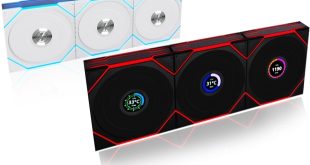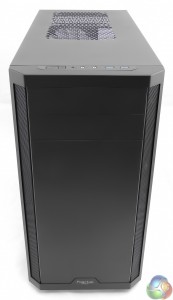
From the front the Core 3300 looks rather low key or nondescript as the front panel is pretty much devoid of features as the buttons and connectors are on the top, rather than the front. There are two pop-out blanking covers that can be removed when you install optical drives. Fractal Design claims the plastic front panel has the appearance of aluminium, which is very much a matter of opinion.
The construction of the case is steel throughout, with the sole exception of that plastic front panel.
Certainly the panel doesn't look like a shiny piece of plastic however the textured finish doesn't exactly look like aluminium either.
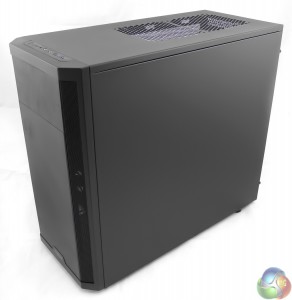
With the Core 3300 turned at at angle you can see the chamfered corners of the front panel are meshed intakes that allow cool air to enter the front of the case. This is a neat way to filter the air without too much fuss and complication however it means you need to remove the front panel if you want to clean the filters properly as they are fixed in place.
That wouldn't be too bad except that the front panel is effectively locked in place when you have an optical drive installed in one of the 5.25-inch bays.
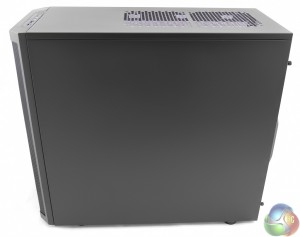
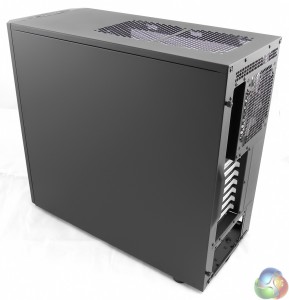
There isn't much to say about the side panel that goes behind the motherboard as it is a plain piece of stamped steel that is devoid of any features. It is held in place with two thumb screws.
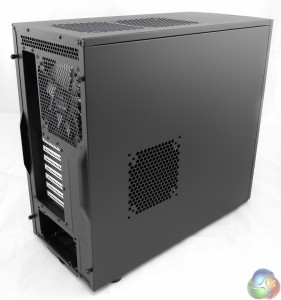
At the rear of the case we see the 140mm exhaust fan next to the I/O panel and seven expansion slots with white blanking plates that contrast with the black finish of the case. At the bottom we can see the mount for the power supply in the conventional location.
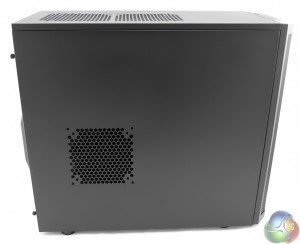
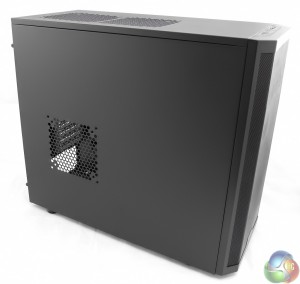
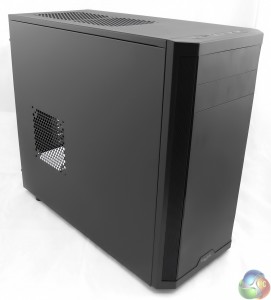
The main side panel is very similar to the back panel except that it is perforated and has mounts for a single 120mm or 140mm case fan that sits above the graphics card(s). It's a similar story on the roof of the case where there are mounts for two case fans, although it is more likely these mounts will be used for liquid cooling.
 KitGuru KitGuru.net – Tech News | Hardware News | Hardware Reviews | IOS | Mobile | Gaming | Graphics Cards
KitGuru KitGuru.net – Tech News | Hardware News | Hardware Reviews | IOS | Mobile | Gaming | Graphics Cards


